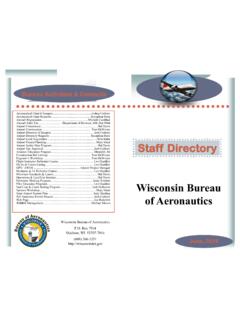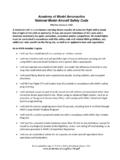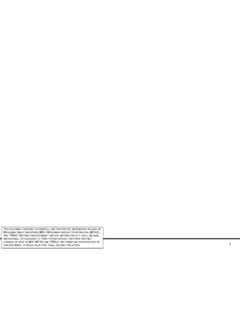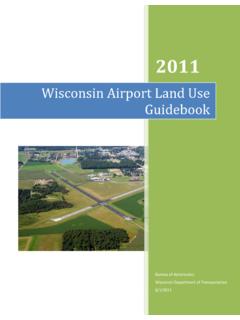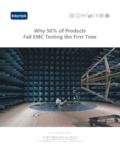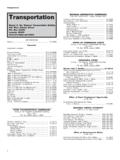Transcription of ACADEMY OF MODEL AERONAUTICS SAFETY …
1 SAFETY HANDBOOKACADEMY OF MODEL AERONAUTICSTABLE OF CONTENTS Welcome ..2 AMA SAFETY Code ..3 Regulatory Compliance ..4 MODEL Operations Near Airports ..4No Fly Zones ..4 Privacy ..4 General SAFETY Practices ..5 Propellers ..5 Batteries ..6 Free Flight ..7 Control Line ..7 Radio Control ..8 See-and-Avoid Guidance ..8 First-Person View (FPV) ..9 Advanced Flight Systems ..9 Gas Turbine Operations ..9RC Pulse Jet Operations ..9 Large MODEL Airplanes (55 lbs+) ..10RC Combat ..10RC Racing ..10 Flying Site Layout ..11 AMA SAFETY HANDBOOK1 WELCOME! Founded in 1936, the AMA is the world s largest sport aviation organization, representing a membership of more than 200,000. Over the years AMA established and evolved a SAFETY program which guides modeling activities through education and voluntary compliance. As technology advances and the MODEL community continues its growth, disciplines and interests have MODEL flying that takes place today is recreational rather than within a formal competition framework, and sometimes it occurs on publicly accessible sites with little or no formal control.
2 Creating a safe environment to protect bystanders, other MODEL pilots, as well as surrounding property, is crucial and the responsibility of every individual participating in modeling highlights the most important SAFETY aspects through its SAFETY Code, but the SAFETY program encompasses many more facets. This SAFETY handbook is a compilation of AMA documents and programs as they pertain to safe MODEL operation. It is intended to provide a centralized location to find all pertinent SAFETY information, and can be a valuable tool for club officers, contest directors, event managers, and others. 02-08-20182 AMA SAFETY HANDBOOK3 ACADEMY OF MODEL AERONAUTICS NATIONAL MODEL AIRCRAFT SAFETY CODE ____Effective January 1, 2018 A MODEL aircraft is a non-human-carrying device capable of sustained flight within visual line of sight of the pilot or spotter(s).
3 It may not exceed limitations of this code and is intended exclusively for sport, recreation, education and/or competition. All MODEL flights must be conducted in accordance with this SAFETY code and related AMA guidelines, any additional rules specific to the flying site, as well as all applicable laws and an AMA member I agree: I will not fly a MODEL aircraft in a careless or reckless manner. I will not interfere with and will yield the right of way to all human-carrying aircraft using AMA s See and Avoid Guidance and a spotter when appropriate. I will not operate any MODEL aircraft while I am under the influence of alcohol or any drug that could adversely affect my ability to safely control the MODEL . I will avoid flying directly over unprotected people, moving vehicles, and occupied structures. I will fly Free Flight (FF) and Control Line (CL) models in compliance with AMA s SAFETY programming.
4 I will maintain visual contact of an RC MODEL aircraft without enhancement other than corrective lenses prescribed to me. When using an advanced flight system, such as an autopilot, or flying First-Person View (FPV), I will comply with AMA s Advanced Flight System programming. I will only fly models weighing more than 55 pounds, including fuel, if certified through AMA s Large MODEL Airplane Program. I will only fly a turbine-powered MODEL aircraft in compliance with AMA s Gas Turbine Program. I will not fly a powered MODEL outdoors closer than 25 feet to any individual, except for myself or my helper(s) located at the flightline, unless I am taking off and landing, or as otherwise provided in AMA s Competition Regulation. I will use an established SAFETY line to separate all MODEL aircraft operations from spectators and COMPLIANCE _____ Key elements of AMA s SAFETY Code include the requirement to see and avoid manned aircraft and maintain MODEL aircraft operations within visual line of sight.
5 In addition to operating within our SAFETY programming, AMA members should comply with any and all applicable federal, state, and local laws and regulations. In February 2012, and again in July 2016, Congress officially recognized the efficacy of community-based SAFETY programming in managing the aeromodelling activity within the United States. With the passage of the FAA Modernization and Reform Act of 2012 (PL 112-95) , Congress set aside further regulation of MODEL aircraft provided, the aircraft is operated in accordance with a community-based set of SAFETY guidelines and within the programming of a nationwide community-based organization. (Section 336, Special Rule for MODEL Aircraft.) Under Section 336, AMA members can operate their MODEL aircraft within the boundaries of AMA s SAFETY guidelines and programming.
6 FAA MODERNIZATION AND REFORM ACT OF 2012 MODEL Operations Near Airports When within five (5) miles of an airport, AMA members must notify the airport(s) before MODEL operations take place. Permanent flying locations, such as chartered club flying sites, should establish a mutually agreed-upon operating procedure to eliminate the need for constant and repeated notification. When within three (3) miles of an airport, MODEL aircraft should remain below 400 feet above the ground unless there is notification or an agreement with the airport that allows models to safely go higher. Be Aware of No-Fly Zones Do not fly near stadiums, critical infrastructure (correctional facilities, water treatment centers, utilities, etc.), large open air events, or any time or place where MODEL aircraft operations are It s important that you respect the privacy and property of others and be aware of your surroundings.
7 What might seem like a cool flight path to you may be a nuisance or perceived as invasion of privacy by others. Using imaging technology for aerial surveillance with a MODEL aircraft capable of obtaining photographs and/or videos or using any types of sensors for collection, retention, or dissemination of surveillance data or information about individuals, homes, businesses, or property locations where there is a reasonable expectation of privacy is strictly prohibited by AMA, unless you have obtained written permission from the individual property owner(s) or manager(s).AMA members should educate themselves on community ordinances, guidelines, or any laws regulating the ownership and operation of a MODEL aircraft. GENERAL SAFETY PRACTICES _____ Adherence to AMA s SAFETY regulations should not be viewed as an obstacle to the enjoyment of MODEL flying, but rather as proof that MODEL fliers are responsible and can operate safely in a community-based environment.
8 It is to each MODEL pilot s personal benefit to make certain that no action on his or her part will result in an unsafe situation or an accident. Before each flight, the pilot should verify the MODEL s condition and proper function to ensure a safe and efficient flight. A pilot should check for proper fitting and placement of parts, with special attention to the engine(s), propeller(s), and control surfaces. It is imperative that all flying sites be situated as far as practical from power lines. Don t attempt to retrieve a MODEL from electric power lines. Contact the local power company. Identify each MODEL aircraft flown outdoors with the name and address or AMA number of the owner. This is not necessary for indoor flying. Identification can be placed inside on an easy to access panel or marked on the outside of the MODEL .
9 Before you participate at an AMA sanctioned event, air show, or a MODEL demonstration, you should test your MODEL aircraft and control systems by successfully performing all intended or anticipated maneuvers prior to the event. If you are an inexperienced pilot, it is important that you obtain the assistance of an experienced pilot for these specific events. Your MODEL aircraft should not carry any pyrotechnic devices that explode or burn, unless you are part of an officially designated AMA Air Show Team (AST). ASTs are authorized to use such devices and practices as defined with the Team AMA Program document. Devices that propel projectiles or drop any object creating a hazard to persons or property are prohibited. Free Flight fuses or other devices that burn producing smoke and are securely attached to the MODEL aircraft during the flight are acceptable.
10 Rocket motors, up to a G-series size, may be used for propulsion, as long as they use solid propellants and remain attached to your MODEL during the flight. Launching a rocket or any other missile from a MODEL aircraft is prohibited. AMA members interested in MODEL rocketry should abide by the National MODEL Rocketry (NAR) SAFETY Code. When appropriate or required by AMA SAFETY guidelines and/or AMA Competition Regulations, helmets must be worn and fastened. Helmets must be OSHA, DOT, ANSI, SNELL, or NOCSAE approved or comply with comparable standards. Propellers: Cracked, nicked, or unbalanced propellers or rotor blades should be replaced and not reused! Stay clear of the propeller arc while starting or running any engine or motor. Don t stop engines by throwing rags AMA SAFETY HANDBOOK502-08-20186or other objects in the propeller.
